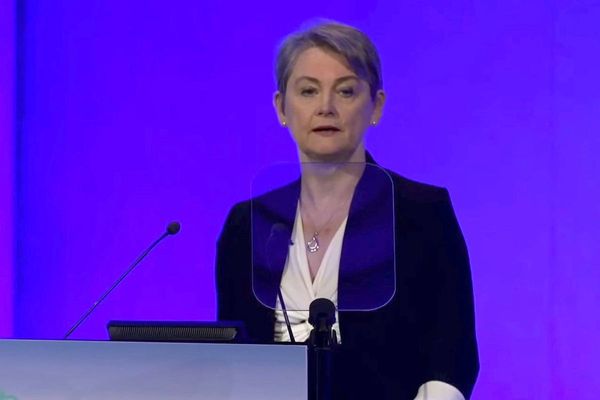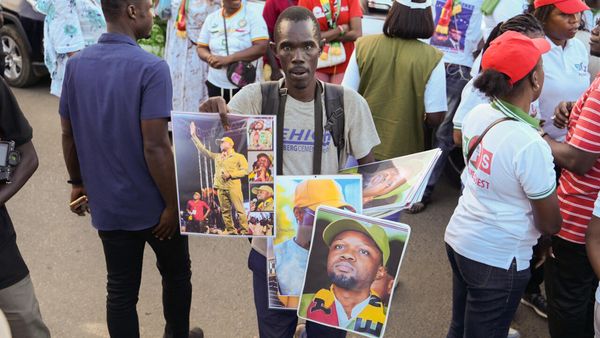
The Nine mastheads, Guardian Australia and the Sydney Theatre Company are all sites of the global clash between creators (journalists, artists, actors, even publishers) and the presumptuous self-importance of traditional media and cultural institutions.
With Christmas fast approaching, here’s a metaphor those institutions should keep front of mind: they’re the wrapping paper, not the present. No matter how well presented, how chic origami style the paper folds may be, they’re still the bit the kids, er, the audience, eagerly rip off to get at what’s inside.
Sure the institutions have long brought a certain brand value to the media and entertainment industries, as a sort of analogue Google. They’re the 20th century-style optimisation of search — promising ease of access for the content that’s inside. But in the all too common amour-propre of institutions, arts administrators and managing editors mistake their offering of a service of connectivity for the substance of the creation they’re aggregating.
It was ever a misreading of how audiences understand or appreciate creative work. Audiences come (or should come) to arts and entertainment — even to independent journalism — not to be consoled or have their biases confirmed — there’s always News Corp for that — but to be confronted, challenged, encouraged to think deeper. And if you’re a creative worker, what else would you want to be offering? And if you’re the audience, why else would you give it your attention?
Now the internet has shown up this institutional conceit for what it is. Content has been disaggregated, out of the control of the institutional brands through search and social media, while the combined effect of social media and celebrity reporting means audiences more instinctively approach a piece of work with an understanding of the personal all-roundedness of the creator.
These changes have been both a blessing and a threat for creative workers. It makes their history, including their politics, a matter for debate, if not gossip. But it brings an honesty to the creative work. It lifts the lid, encouraging the audience to look inside at the workings of the creative process, affirming that journalists are not simply stenographers or actors simply moving pieces of the stage.
It holds out a promise to our audiences that our works are more than the sum of their parts: they’re about respecting the rights of others, of building a world worth creating for. It’s in service of that promise that journalists are signing industry letters for a better journalism, or performers are wearing keffiyehs in solidarity, or artists are incorporating their politics into their work. or publishers are standing up for the rights of freedom of expression inherent in protest.
Too many institutions see this increased creator’s power as a threat to their traditional monopoly over content aggregation and distribution. The gig nature of most employment in the arts and entertainment industry makes workers particularly vulnerable, as America’s NFL was eager to demonstrate to its other players when star quarterback Colin Kaepernick was squeezed out of the game for his protests against police brutality.
In much of Australia there’s an institutional survival instinct, a pre-emptive buckle as it’s referred to within the ABC — an unwillingness to offend funders or donors over hot-button issues (such as, say, the Middle East) and a wariness about a poking the News Corp bear that threatens to turn the institution into a culture wars target.
But as Disney’s sports flagship ESPN is finding, the desire for a politics-free media is itself a political statement — particularly in the context of the global racial reckoning. Former ESPN US reporter Joel Anderson wrote in Slate last week: “We all should now understand that there’s no such thing as sticking to sports, because there’s no possibility of stripping the cultural trappings of our games down to just the score and roster movement.”
The right seems to have a better understanding of the power of the creator than the traditional cultural and media organisations. That’s why conservatives work to demonise “elites”, to pull the string of creative workers’ challenge to power. It’s why the core business model of The Australian is the hunt for creators they can turn into an example as a warning to others to keep their heads down.
Right-wing media are also happy to abuse the rights of creative workers for their own ends. As The West Australian increasingly absorbs the News Corp tabloid schtick, it disgraced itself with an image of the openly pro-union Margot Robbie to illustrate its front page attack on Labor’s industrial relations reforms.
All our traditional cultural institutions — in the media, arts, sport, entertainment — grew out of a certain monopoly over a segment of the cultural space. They take their longevity as a promise of future survival but their real power comes from the power of the creative works they aggregate. And their survival depends on standing up for the free expression of the creative workers they rely on.







